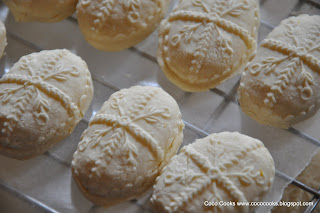Last week I was fortunate enough to receive an sample of Ile De France cheese. I chose the Goat Cheese . I could the cheese alone with a ripe juicy pear.It's mellow but with a little tang. Perfect for plain eating or to use in a favorite dish. But I had received some black garlic in the mail and had had puff pastry in the freezer. So naturally I made a scrumptious tart. Black garlic is ferment garlic that has a slightly sweet taste that would work well with a drizzle of honey and the Ile De France Goat Cheese. The tart is so east to assemble and would be a hit at any dinner. Cut up the puff pastry into even smaller squares for an hors d'oeuvre.
Goat Cheese , Black Garlic, and Honey Tarts
serves 4
1 sheet of puff pastry cut into 4 pieces
1 log of Ile De France Goat Cheese
4-8 cloves of black garlic( depends on taste and size)
honey to drizzle
dried herb blend
salt
1 egg beaten
Defrost the puff pastry.Preheat oven to 375F. Brush puff pastry with beaten egg. Crumble Goat cheese atop the pastry, Leave a small border. Mince the black garlic. Be careful as its mushy in texture. Sprinkle a clove or two of the black garlic minced atop the goat cheese on pastry. Drizzle honey liberally. Add a pinch of salt to each piece. Bake on a parchment lined baking sheet until golden and slightly caramelized. Honey may run but that's fine.
































